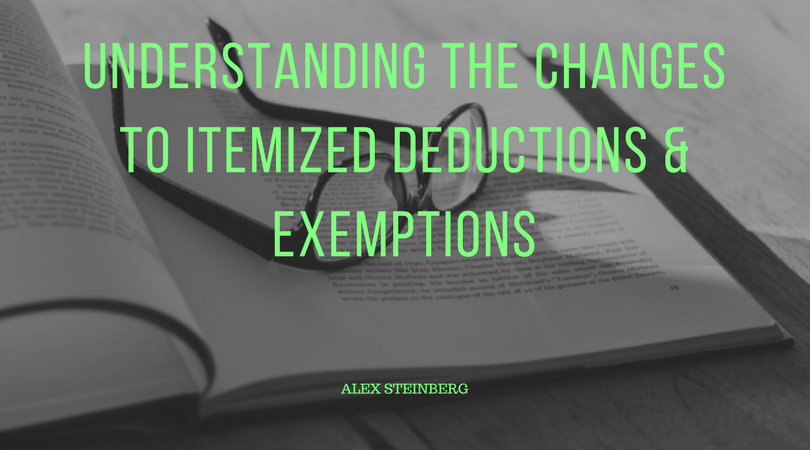Over the past two weeks, I broke down the new Section 199A deduction (part 1 & part 2) for business owners. This week I want to focus on some important changes to your personal tax write-offs. More specifically, we will focus on some of the major changes to your 2018 itemized deductions from the passage of the new tax legislation. Unless otherwise stated below, the changes start with the 2018 tax year and end with the 2025 tax year.
The New Standard Deduction
The new tax laws have essentially doubled the standard deduction for everyone. The standard deduction for Married filing jointly (“MFJ”) taxpayers will be $24,000, single taxpayers $12,000, and head of household filers $18,000. Each year, the amounts will be adjusted for inflation. What this means is that for all taxpayers, your minimum deduction against your income has been increased. It also means you might not have to go through the hassle of collecting tax forms and other documents to itemize your deductions. Also, if you are considered elderly or blind for personal tax purposes, the additional deduction did not change.
On a side note, new tax laws removed the personal exemption deductions through the 2025 tax year. This removal does stifle some of the benefits of the increased standard deduction.
Big Changes to the State & Local Tax (“SALT”) Deduction
For those who have itemized deductions over the thresholds stated above, you may claim up to $10,000 for your SALT deduction. In general, this includes your state and local property taxes paid as well state and local income taxes paid through wages or estimated tax payments. The prior law did not limit this deduction, so this is potentially a big blow to those who live in the high tax and/or high property tax states.
New Limitations on Mortgage and Home Equity Loan Interest
Again, this will only affect those who itemize their deductions and who took on new mortgage and home equity debt on or before December 15, 2017. The write-off for mortgage interest is now limited to underlying debt balances of up to $750,000 on primary and second homes, while the home equity loan interest deduction has been eliminated. All other outstanding loans are grandfathered into the old laws.
Medical Expenses
For tax years beginning in 2017 and ending in 2018, the threshold for the medical expense deduction is reduced from 10% of Adjusted Gross Income (AGI) to 7.5%.
The Removal of Miscellaneous Itemized Deductions
For those who can utilize the 2% of AGI miscellaneous itemized deductions deduction, you will now be out of luck as these deductions have been eliminated. This means that gone are the days of deducting unreimbursed employee expenses, tax preparation fees, etc.
The Removal of the “PEASE” Limitation
Over the past few years, high income tax payers (MFJ over $313,800 and single over $261,500) have had all or a portion of their itemized deductions phased out. This limitation has been suspended by the new tax laws.
Conclusion
As you can see, there are many major changes to your deductions starting in 2018. As you might imagine, there are many deductions that have been changed but are not covered by this article. We highly recommend all taxpayers speak with their tax advisor during 2018 to review all relevant changes, especially those who are required to make quarterly estimated tax payments. If you have any questions for me please do not hesitate to contact me directly!






